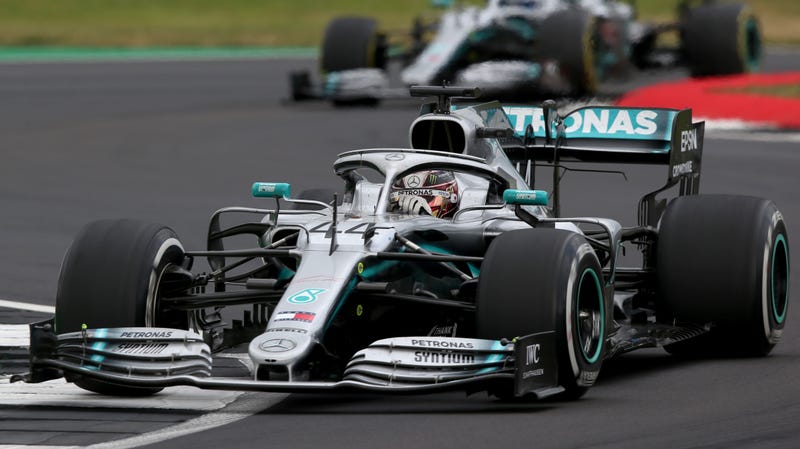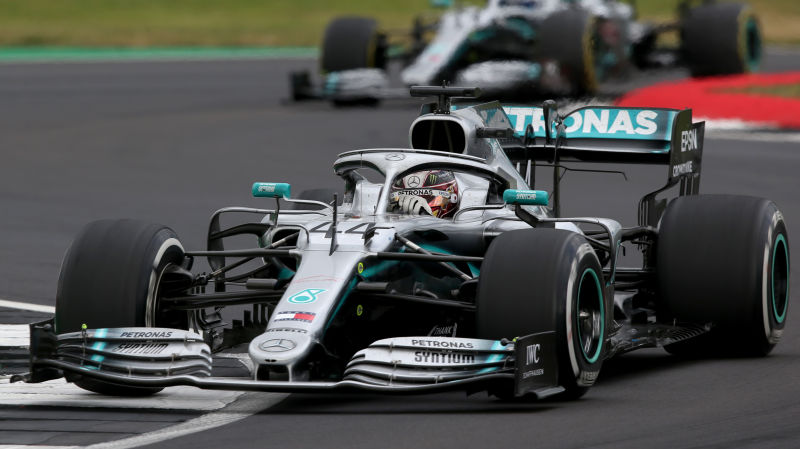
Formula One will have a different set of rules come its regular overhaul interval of 2021, and we’ve had an idea of what those rules will entail for a while now—mainly, because it’s obvious what needs to change. But F1 gave some more detailed ideas this week, with the goals of more competition for less money.
Before there’s any hope: No, those ideas don’t include reelinginthestewards.
F1, in general, wants to have more competitive fields, better-looking cars, and a more affordable series two years from now. “Affordable” is relative, of course, and basically means some teams won’t get to spend $500 million annually while others spend $44 million. It’ll be a real shame, for those big teams.
When it comes to the competitiveness of cars and fields, F1 said Wednesday that one idea is to undo some of the downforce issues on current cars. Complicated aerodynamic designs introduced with 2017 rule changes meant cars would have downforce reduced by about 50 percent when following others, which puts the car following at a big disadvantage to the one out front. F1 began working to fix that this year, and plans to make it better by 2021.
From the rules announcement:
But according to [FIA head of single-seater technical matters, Nicholas] Tombazis, any improvements achieved in 2019 are nothing compared to what we’ll see in two years’ time, when ‘ground effect’ (downforce produced by the shaped underside of cars) will play a much bigger role in how the cars generate their downforce…
“[With the 2021 car] typically, from about a 50% loss of downforce for the following car at two car distances [in 2017] it’s down to about a 5-10% loss,” says Tombazis. “So we have a massive reduction of the reduction of downforce for the following car.”
Advertisement
To adjust, tires will go from 13 inches to 18 inches.
F1 also recognizes, in terms of competition, that only three teams have any hope of competing for a win right now, and that it’s been that way for years. The goal for 2021 and beyond is for “a really good, moderately-funded team” to be able to “cause a lot of trouble,” which is a lot harder to make happen than it sounds.
Advertisement
Doing that, F1 Managing Director of Motorsports Ross Brawn said, will include aerodynamic rules “designed to stop one team discovering a ‘silver bullet’” in competition, which has already made teams mad because they want design freedom. Individualistic designs mean little if the racing isn’t great, though.
F1 is also looking at the “removal of some driver aids,” and a proposal to make drivers have a bigger role in managing vehicle tasks like overheating and tire wear during the race, rather than relying on engineers to help them through.
Advertisement
Perhaps the most controversial 2021 idea, in a series where there are massive gaps between team budgets—and, subsequently, on the track—is the idea for a “financially viable championship.” That means budget caps and standardized equipment, whether the faster, bigger-budget teams want them or not.
F1 said several pieces of standardized equipment and budget items have already been chosen for 2021. From the announcement:
They include:
– Standardised wheel rims
– A standardised brake system
– A ban on hydraulic suspension systems
– A restriction on the use of certain exotic materials
– Standardised radiators
– A frozen specification of gearbox parameters
– Standardised pit equipment for all teams
There are also the ideas to reduce wind-tunnel time and limit the size of teams, but F1 said the proposal is for cost controls not to include the salaries of drivers and certain team members or marketing. Marketing the series is good, was the basic message, and the higher-ups want their money.
Advertisement
Least of all, F1 wants its cars to be “sexy” when the new rules come out, with the ultimate goal of “deserving of a spot on a fan’s bedroom wall.” The FIA and F1 will work with an automotive stylist for that, the announcement said.
What the story didn’t mention was what F1 plans to do about its penalty problem in the future, which is likely nothing. Hard racing isn’t hard racing without a steward review—we all know that.
Advertisement
Here’s to 2021, everybody.













